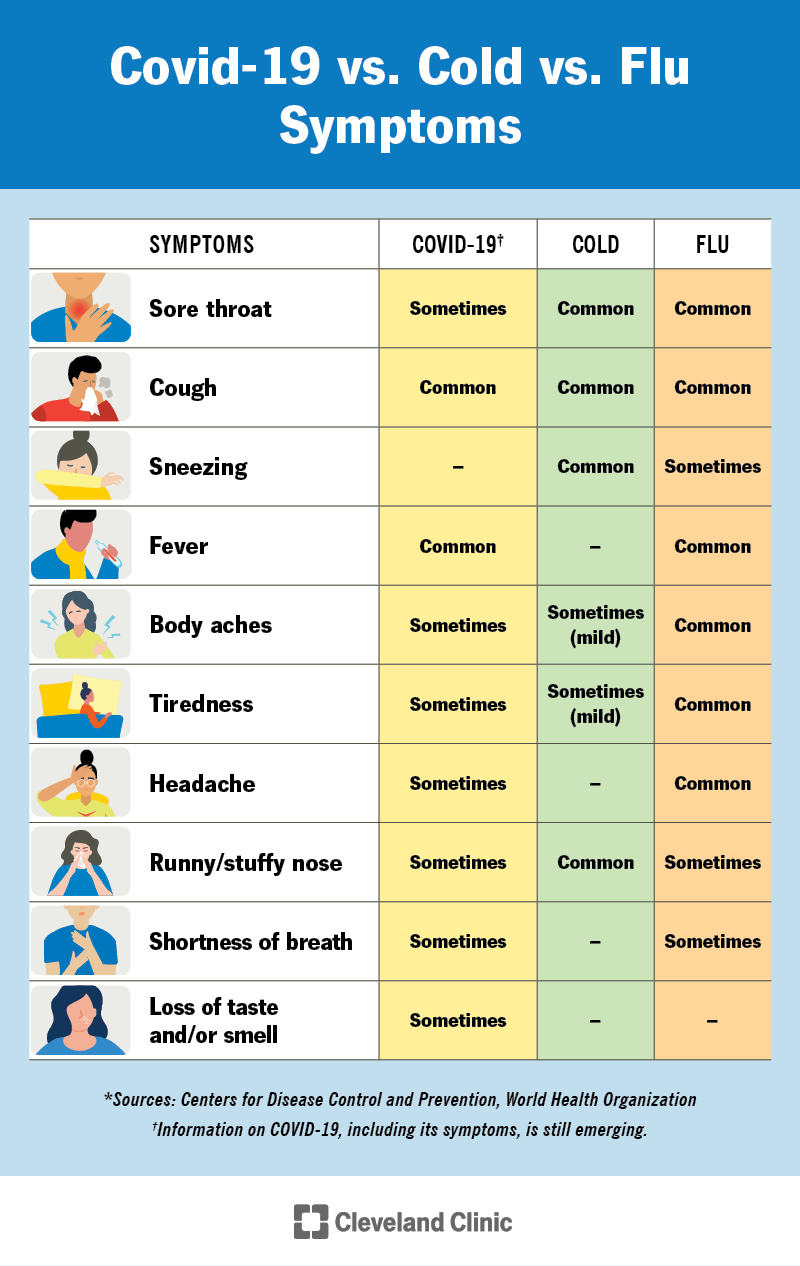|
Overview What is the flu (influenza)? The flu is an illness you get from the influenza virus. It causes symptoms like head and body aches, sore throat, fever and respiratory symptoms, which can be severe. Flu is most common in winter months, when many people can get sick at once (an epidemic). Advertisement Cleveland Clinic is a non-profit academic medical center. Advertising on our site helps support our mission. We do not endorse non-Cleveland Clinic products or services. Policy When is flu season?Flu season — when cases of the flu go up dramatically — in the Northern Hemisphere (which includes the U.S.) is October through May. The highest number of cases (peak) usually happen between December and February. How common is the flu?The flu is one of the most common infectious diseases. Every flu season, about 20 to 40 million people in the U.S. catch the flu. What is the difference between the flu and the common cold?The flu and the common cold can have similar symptoms, like runny nose and cough. But cold symptoms are usually mild and flu symptoms can be severe and lead to serious complications. Different viruses cause colds and the flu. How do I know if I have the flu or COVID-19?Since they have similar symptoms, the only way to know for sure if you have the flu or COVID-19 is to get tested. They both have a risk of serious illness. But different viruses cause these infections, and providers treat them with different medications. Who is at higher risk for complications from the flu?Certain health conditions can put you at higher risk for severe illness from the flu. This includes life-threatening complications that require hospitalization. You’re at higher risk for serious illness if you: Advertisement Non-Hispanic Black people, non-Hispanic American Indians, Alaska Native people and Hispanic or Latino people have the highest rates of severe illness from the flu compared to non-Hispanic White people and non-Hispanic Asian people. (责任编辑:) |

